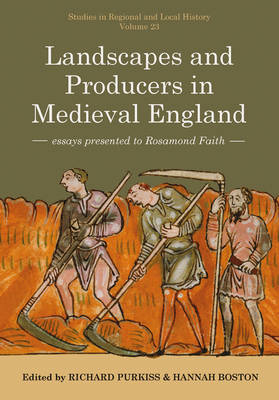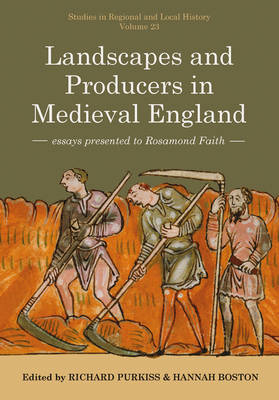
- Afhalen na 1 uur in een winkel met voorraad
- Gratis thuislevering in België vanaf € 30
- Ruim aanbod met 7 miljoen producten
- Afhalen na 1 uur in een winkel met voorraad
- Gratis thuislevering in België vanaf € 30
- Ruim aanbod met 7 miljoen producten
Landscapes and Producers in Medieval England
Essays Presented to Rosamond Faith Volume 23
Omschrijving
Dr Rosamond Faith is a leading historian of the English peasantry in the early and central Middle Ages. In a series of influential studies, she has uncovered the basic structures of rural society, revealing how economic organisation, physical environment, and ideology shaped the lives of ordinary people in the earliest documented centuries. In this Festschrift, friends and colleagues take up her theme, offering new perspectives on people who worked for a living between the seventh and fourteenth centuries. King Alfred famously divided society into three orders, but whereas the lives of 'those who fight' and 'those who pray' are recorded in their own words, the experience of 'those who work' can only be recovered indirectly. The essays collected here approach rural society under three different headings, each examining a different dimension of peasant life. The first section addresses the organisation of rural society. Every locality was subject to instruments and processes regulating the exploitation of the landscape, whether administrative or co-operative in nature, and whether operating on a regional or manorial scale. A second group of essays considers how the rural population was classified, and how this reflected or obscured realities on the ground. Administrative documents employed social categories which did not necessarily align with everyday usage, while people whose livelihood was not wholly agricultural, or not entirely encompassed by the manor, had a light documentary footprint. Further papers address the practicalities of agricultural production. While much was dictated by universal constraints, scientific and topographical studies shed light on adaptations in technology and cultivation systems. The expert contributions assembled in this lively volume include local studies ranging from Devon to Lincolnshire and will be of interest to anyone thinking about the social history of medieval England.
Specificaties
Betrokkenen
- Uitgeverij:
Inhoud
- Aantal bladzijden:
- 288
- Taal:
- Engels
- Reeks:
Eigenschappen
- Productcode (EAN):
- 9781912260744
- Verschijningsdatum:
- 1/05/2026
- Uitvoering:
- Paperback
- Formaat:
- Trade paperback (VS)
- Afmetingen:
- 171 mm x 248 mm

Alleen bij Standaard Boekhandel
Beoordelingen
We publiceren alleen reviews die voldoen aan de voorwaarden voor reviews. Bekijk onze voorwaarden voor reviews.







